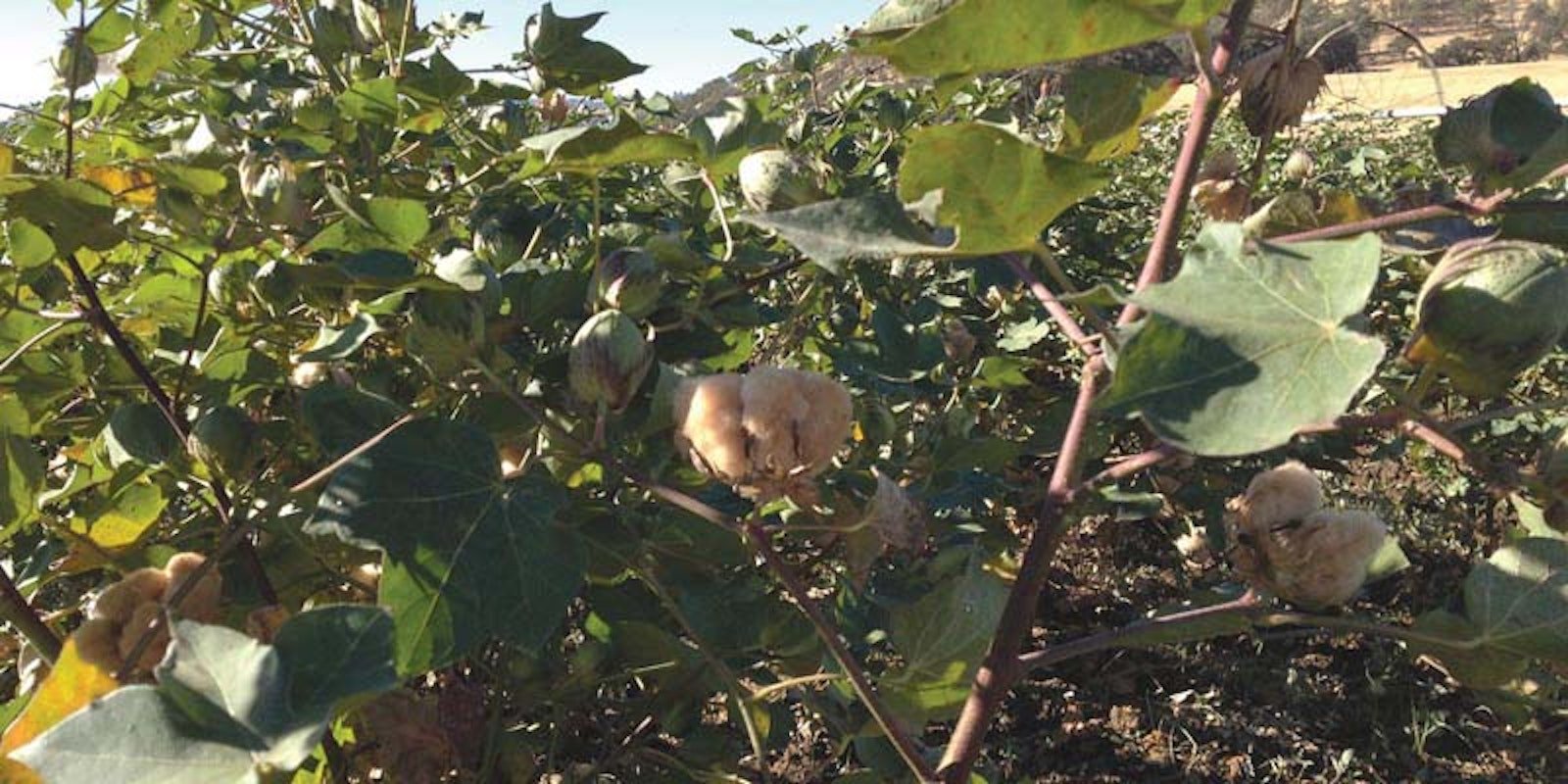I was shocked when my friend Phreadde Davis (known by some spinners as “Johnny Cottonseed”) first told me that she grows colored cotton in her yard. Currently a New Mexico resident, she surprised me even more when she said she grew cotton at her former home in New Jersey!
Cotton on a Large and Small Scale
It’s nearing the end of cotton-planting season in the United States. The gorgeous hibiscus-like blossoms and bulging bolls are months away from appearing, but as of May 22, only 33% of the 2017 commercial cotton crop is estimated to be in the ground. The cotton plant is naturally a perennial, but it’s planted each year in industrial settings.
The story of cotton is an incredible tale. Between the fields of industrial snow-white cotton and the small-batch colored cotton that several of my friends grow in their yards lies the rich, complex, ambitious cotton project of Sally Fox. In the Winter 2014 issue of Spin Off, Kate Larson shares the challenges and triumphs of Sally Fox and her Foxfibre Cotton business.
Long before the slow textile movement surfaced, Sally Fox came across colored cotton seeds in the early 1980s and discovered that they resisted parasites and reduced the need for pesticides. In the intervening decades, Sally has farmed in several states, finally finding a home for herself, her cotton, 140 Merino sheep, and a crop of heirloom Sonora wheat.
Cotton can be found in a range of colors from white to dark brown, green, and even pink. Photo by Joe Coca
Kate writes, “The politics of cotton, coupled with the pressures of a vast global textile industry, have frustrated Sally Fox’s dreams for sustainable cotton production for more than twenty years. But with new energy, she is looking to the future: ‘My goal is that by next year, the cotton breeding program will be funded—not just by me selling socks and yarn, but by foundations. I will have help and be able to teach what I know, passing on the knowledge and the seeds to the next generation. Five to ten years from now, I hope to have trained great people who have gone on to breeding naturally colored organic cottons in their own climates and countries. I want my farm to be this place of beauty and ecological balance. . . .’”
Coming Up Cotton
After years when she refrained from planting a cotton crop, Sally decided to revive her Foxfibre business. She hosted a crowdfunding campaign in 2013 to repair equipment and hire help. “I feel truly supported, something I have not felt in a really long time,” she said. “And I feel that people really do want me to continue this work.”
—Anne
Feature Image: Sally Fox had to relocate her cotton crops several times before she found a beautiful space for her farm in the Capay Valley, near Brooks, California. Photo by Sally Fox


